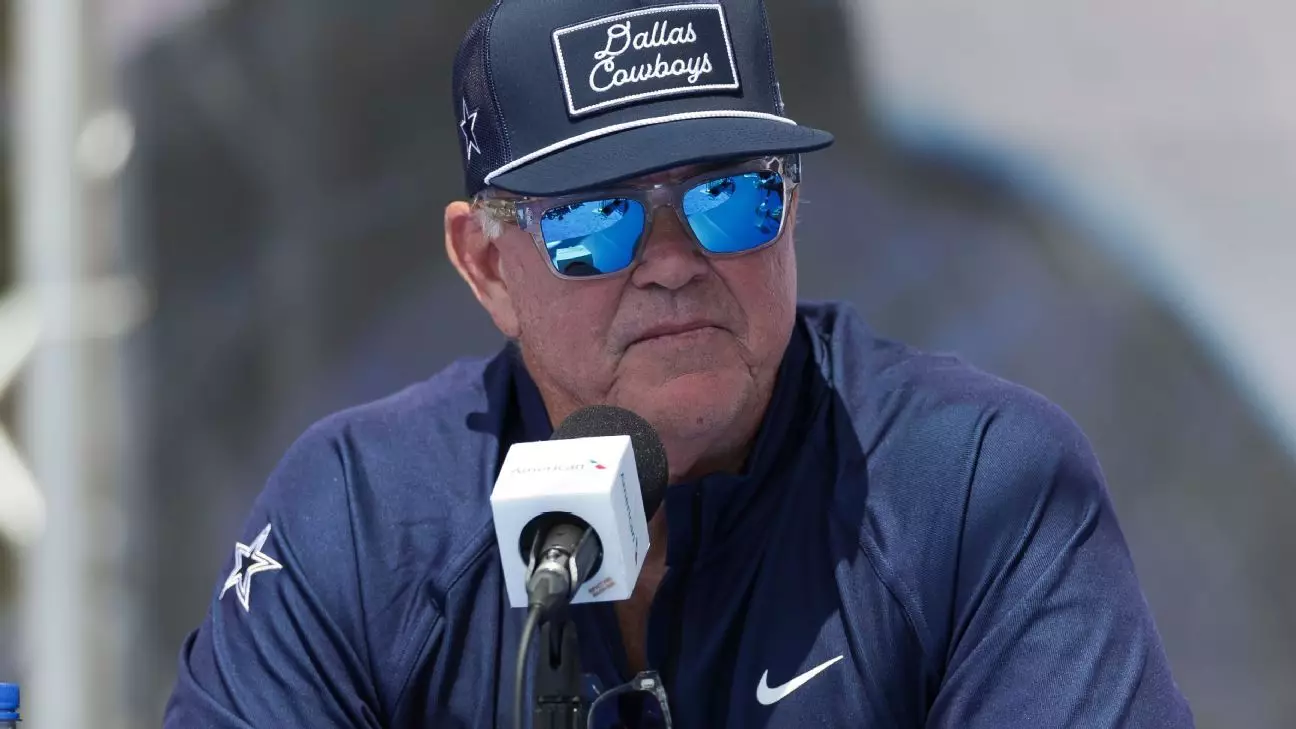The Dallas Cowboys, a franchise steeped in tradition and expectations, are pivoting in their approach to roster construction as we head into the 2025 NFL season. The past year’s mantra was “all-in,” a term laden with implications of massive risks and commitments. This year, however, executive vice president Stephen Jones has articulated a new philosophy: “selectively aggressive.” This change signals a move towards a more calculated methodology in player acquisition, blending the anticipation of the NFL Draft with a shrewd evaluation of free agency.
Stephen Jones highlighted the intent to address critical team needs before the draft, echoing a strategy reminiscent of the franchise’s historically prudent approach. “Our ultimate goal has been to address as many of our musts and needs beforehand, so that when draft day arrives, we can select the best players available,” he stated. This acknowledgment of last year’s shortcomings in roster management lays the groundwork for this season’s updated strategy. The Cowboys are clearly aiming for more effective off-season planning to give themselves a competitive edge when it comes to player selections.
Among the high-stakes negotiations on the horizon is the anticipated long-term extension for All-Pro pass rusher Micah Parsons. As a pivotal player for the Cowboys, Parsons’ extension isn’t just a contractual obligation; it’s a statement of the team’s commitment to maintaining its defensive prowess. With the possibility of Parsons becoming the highest-paid defensive player in the NFL, estimated figures around $34 million yearly are bound to generate buzz.
While talks have not officially commenced, the Cowboys’ front office is expected to engage Parsons’ representation shortly. This proactive approach could serve as a contrast to last year’s negotiations with key players like wide receiver CeeDee Lamb and quarterback Dak Prescott, which were drawn out and tumultuous. The organizations’ ability to learn from past experiences will be vital to their future negotiations, as they seek to foster a more harmonious environment while securing their most valuable assets.
In conjunction with Parsons’ negotiations, the Cowboys find themselves in discussions with various players poised to become free agents, including defensive tackle Osa Odighizuwa and veteran defensive end DeMarcus Lawrence. The Cowboys’ strategy of approaching these discussions with a clear vision will be crucial. Lawrence, in particular, has been a cornerstone of the defense since 2014, and retaining his experience could be invaluable, especially as the team prepares for potential changes.
While discussions are underway, Jones has remained tight-lipped on the prospects of utilizing franchise or transition tags on players like Odighizuwa. The careful management of cap space and contract structuring will be essential as the Cowboys navigate a landscape littered with decisions that could pivotally affect their roster.
Cap Space: A Breathing Room for Strategic Maneuvers
The recent increase in the salary cap—projected to rise between $277.5 million to $281.5 million—grants the Cowboys a certain level of financial flexibility which had been previously compromised. With key veterans potentially retiring or restructuring their contracts, the franchise is set to capitalize on available cap space. Expectations are high that players like Prescott and Lamb will undergo contract adjustments aimed at freeing up significant cap room—estimated at around $57 million—allowing the Cowboys to be more “selectively aggressive.”
This added flexibility translates into a more dynamic offseason where the team can target both its own free agents and explore potential trades or new acquisitions from the broader market. Jones emphasized this point: “We will explore all avenues to improve our football team,” showcasing an eagerness to elevate the team while remaining pragmatic and methodical about their financial commitments.
The Dallas Cowboys: A Forward-Looking Vision
As the Cowboys embark on this new era of strategic planning, the importance of adaptability cannot be overstated. Transitioning from a risky “all-in” mentality to a “selectively aggressive” approach opens doors for calculated decisions that may yield sustainable growth and success. While the road ahead is littered with uncertainties, there’s an underlying sense of optimism that the Cowboys will use this new direction to not only bolster their current roster but to also redefine their identity in an increasingly competitive league. By harmonizing their drafting strategy with judicious moves in free agency, the Cowboys aim to transform ambition into achievement, seeking long-term success that extends well beyond the immediate future.

